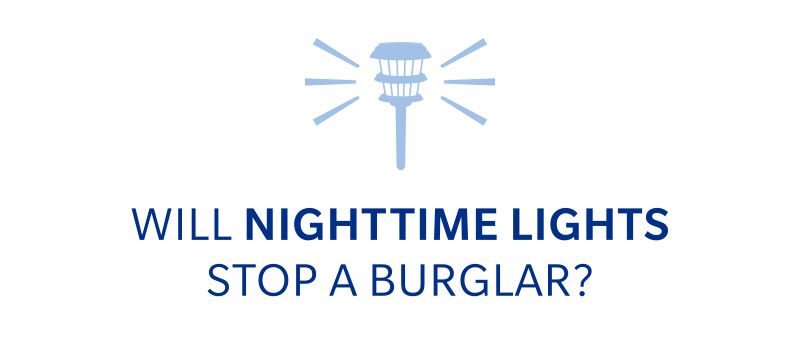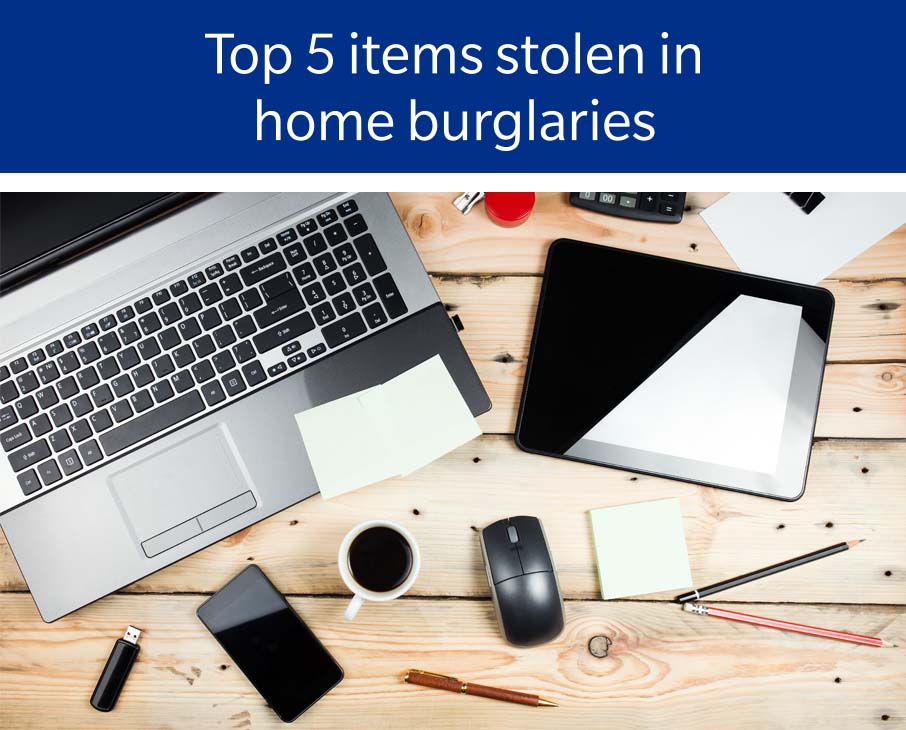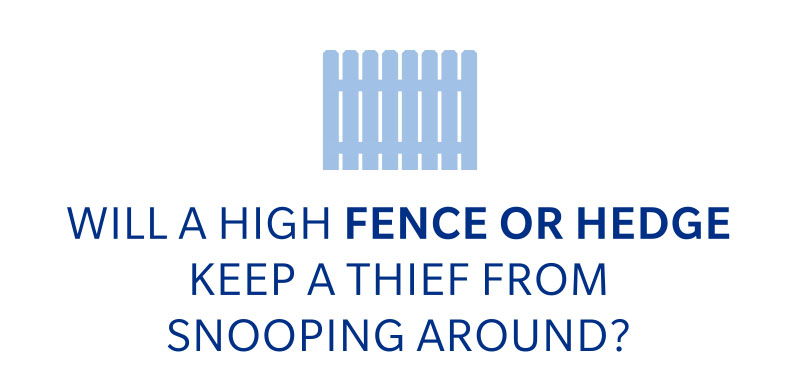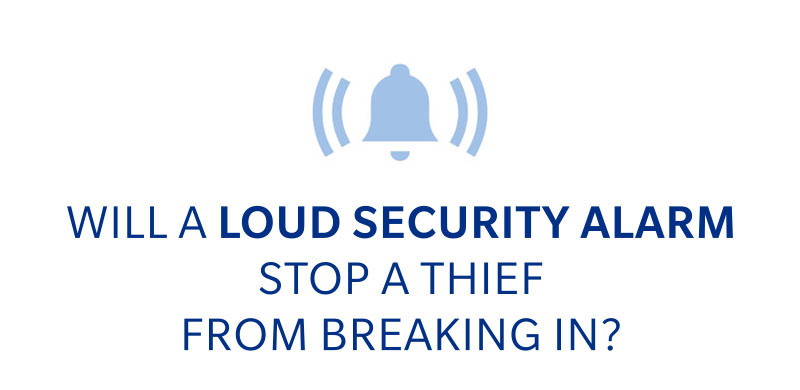The Truth About Basic Home Security
“YOU HAVE TO THINK LIKE A BAD GUY TO PROTECT YOUR HOME”
Is your home an easy target for burglars? Find out what they’re looking for, according to home security pros, and how you can help make your home more secure
“I came home from work, and the garage door was open. I thought I forgot to close it, but then I noticed the back door was open too,” says Jeanne Storm,* a homeowner in St. Louis, Missouri. “I walked into the kitchen and there was glass everywhere.”
The sun was still shining outside, she recalls, which made it even harder to believe what the broken glass really meant. Storm and her husband were the victims of a well-planned burglary that happened in broad daylight.
“I was totally disoriented. The alarm was going off and the dog was upset. I called 911 and they said it would be 30 minutes before they arrived because I wasn’t a priority.”
“They took all of our electronics. Our wedding pictures were on those laptops, and we never recovered any of it.”
Later, the couple would discover thieves spent more than a half-hour ransacking their home and garage, and stole more than easy-to-grab jewelry and electronics. The burglars rolled off with the couple’s lawn mower after filling up the gas tank from a small gas can.
Like many homeowners, Storm and her husband believed their home was secure. But home security specialists know many basic home security measures may give homeowners a false sense of safety.
“You have to think like a bad guy to really protect your home,” says Sean Ahrens, a Certified Protection Professional (CPP) in Chicago with 20 years of experience in security management. “You have the most knowledge of your home. How would you break in? The ideas you come up with, so will the bad guys.”
So, what do burglars see when they look at your home? We asked professional home security experts to weigh in on the most common anti-burglary advice out there.

SECURITY PRO: “We hear stories about thieves bragging online about taming pets with treats. I wouldn’t rely on a dog as a primary security measure.”
That “Beware of Dog” sign or the sound of barking may not deter some thieves.
Storm agrees her cocker spaniel wasn’t much of a deterrent. “She would bark, but she would never bite. I’m pretty sure they whacked her on the head a few times, too. We were lucky. I’ve heard some people’s pets get shot.”
“I’ve talked to burglars who are incarcerated,” says Chris E. McGoey, a veteran security consultant. “As a rule of thumb, most burglars hate dogs. They hate noisy dogs because they may alert the resident or a neighbor. Dogs are like an alarm system. If you have a big enough dog to create a sense of fear, that’s a plus. I guarantee you a burglar is not going to risk feeding snacks to a Rottweiler.”
Michael Silva, CPP, a home security consultant in Seattle, Washington, agrees — to a point. “My Boston terrier, Rosie, would bark loudly, but all 13 pounds of her wouldn’t do much damage,” says Silva. “Whether a dog adds a layer of protection really depends on the breed and the training. It doesn’t hurt to have one, but I wouldn’t rely on a dog as a primary security measure.”

SECURITY PRO: “The burglars I’ve talked to admit they avoid making hits at night because that’s when most people are home. The vast majority of burglaries occur during the day.”
Typical security precautions for homeowners — lock all doors and windows, set the alarm, motion-activated lighting — are meant to protect people while they sleep, because many homeowners assume burglaries happen when criminals can operate under the cover of darkness. But your property may be more vulnerable during the day, when most homeowners are at work or running errands, according to a report on residential burglaries by the U.S. Department of Justice’s Office of Community-Oriented Policing Services (COPS).
“The statistics vary by region, but as a rule of thumb, it’s an afternoon crime that happens between 1 p.m. and 4 p.m., Monday through Friday, when most people are away from home,” says McGoey.
Activity that suggests someone might be home in the daytime can have a deterrent effect. “Houses that appear occupied — with the lights on, a vehicle in the driveway, visible activity or audible noises from within — are less likely to be burglarized,” according to the COPS report.
But nighttime may offer cover for another type of burglar — the opportunist who doesn’t really plan a break-in so much as stumble into easy opportunities to steal, says Ahrens. Motion-activated lights, locks on exterior tool sheds and outdoor accessories (think: grill, bikes) can help homeowners secure a property against nighttime theft.

1. Cash (79%)
2. Jewelry (68%)
3. Illegal drugs (58%)
4. Electronics (56%)
5. Prescription drugs (44%)
Source: Department of Criminal Justice and Criminology at University of North Carolina at Charlotte

SECURITY PRO: “I’ve heard some burglars say fences or enclosed yards makes it easier for them to break in without being seen, but there’s nothing inconspicuous about scaling a fence.”
Homes with privacy fences, dense landscaping and tall trees covering windows or doors can provide better cover for thieves because passersby or neighbors can’t see a thief entering or leaving the home, according to the COPS report.
Storm’s burglars attempted multiple points of entry before ultimately breaking a window in the back door. “We have eight-foot wooden fences all the way around. We also have video of them getting into our yard by jumping on top of a dumpster and going over the back fence very easily,” she says. “We felt like the backyard was safe because it was fenced off, but it provided cover. They took everything out of our garage, found heavy-duty plant cutters and cut our alarm system’s wires. They used our stuff to break into our house.”
"They used our stuff to break into our house.”
But McGoey notes that tall fences only provide cover after a burglar scales it. “It still takes time to get over the fence.” No matter how tall or secure the fence, it can curb burglars looking for an easy mark. “A fence that’s only 3-feet high with a locked gate can have a deterrent effect. A home with no fence means a burglar can walk up to your door without looking suspicious.”
Ahrens agrees that high security fences may provide quick cover for opportunists, but a determined burglar is more interested in blending in. “He won’t climb a fence. He’s very confident and competent. He’ll walk up to the front door in broad daylight, ring the doorbell to see if anyone is home, quickly kick the door in and close it behind him.”
One of his recommendations for securing a home: replace the standard screws that attach the hinges and strike plate on all exterior doors with 3 1/2-inch star-drive screws anchored into the heavy wood stud behind the door trim. “Many doors are easy to kick through because they’re anchored to a flimsy piece of trim or framing with short screws,” says Ahrens.

SECURITY PRO: “Determined burglars are aware of police response times. If an alarm sounds, they know how much time they have to grab valuables before the police show up.”
Although her home’s alarm system was unmonitored at the time of the break-in and Storm says the thieves cut some of the alarm’s wires, the alarm sounded for about two hours. “It has the loudest siren ever,” says Storm. “What’s crazy is, people in our neighborhood told us they saw things going on in our house, heard the alarm go off and didn’t do anything. They just walked by.”
Police response times to non-emergency household burglaries varies, but one survey by the Bureau of Justice Statitics found response times ranged from 11 minutes to 1 hour for a majority of incidents. Consider how long it might take a skilled burglar to grab a few high-value items — think: laptops, electronics, jewelry. Even with an alarm blaring, a skilled thief may have enough time to grab valuables.
“An alarm system’s real benefit is the sign in your front lawn, backed up by decals on your windows,” says McGoey. “If a certain type of burglar sees those, they know an alarm may go off and make a hell of a racket and call the police. It’s easier to just go down the street.”
But even the most expensive, sophisticated security alarm systems can be compromised, warns Silva. Homeowners often forget to turn on alarms, or worse. During a security review of a $15 million home in the Seattle, Silva interviewed the homeowner’s housekeeper as part of protocol. “When I asked her how she entered the home, she showed me where the family kept the key — under a door mat outside.” Silva advises homeowners not to hide keys on the property or inside easy-to-break lockboxes. “There’s no such thing as a good hiding place. Ask a neighbor to keep a key inside their home if you need a spare for emergencies.”

SECURITY PRO: “Burglars are in a hurry — anything that slows them down can stop them.”
Silva compares home security to an onion. “Each layer of the onion is a concentric circle of protection around the home, starting at the perimeter, at the curb, and moving all the way inside the home,” says Silva. “The more layers you add, the better.”
A sturdy fence. Good nighttime lighting. A high-security lock on the front door. A deadbolt on the master bedroom door that’s locked whenever you leave the home. A safe tucked inside a closet. Individually, these security features might not seem like a challenge to a determined burglar, but each layer adds visibility and time to a break-in, which burglars know increases their risk of getting caught, says Silva.
One example: Smashing single-pane glass to unlock a window or door takes a matter of seconds. But busting through laminated safety glass doesn’t happen quickly or quietly, says McGoey. “A crook’s worst enemy is time, and safety glass takes up too much of that.”
“The majority of burglars want to come through doors. Fortify those doors,” says McGoey. “Glass breaks, but you can put bars on glass. Windows with laminate in between two sheets of glass built into the frame — you almost have to chop it with an axe to get through it.”
“You realize, in the worst possible way, that you’re not invincible.”
Storm says she’ll never regain the full sense of security she had before the break-in, although she and her husband have made significant changes to their home security and habits. They installed motion detectors inside the home, and the alarm is now monitored by a security service. They installed laminated safety glass in the back door. They keep electronics password-protected and tucked away when they’re not home. But there are still sleepless nights, and she worries it could happen again. The stress of replacing stolen items was nothing compared to knowing she’ll never see those irreplaceable wedding photos. The experience will have a lifetime impact, she says. “You realize, in the worst possible way, that you’re not invincible.”

“Some burglars simply walk down the street looking for a house with curb appeal — an easy target,” says McGoey. “They put all of these visual clues together, then confirm it by walking up and knocking on the door.”
- Newspapers or mail piled up
- Pizza and takeout flyers hanging on the door
- No garbage cans at the curb on garbage pickup days
- Overgrown grass and foliage
- No interior or exterior lights turned on at night
This article originally appeared on the Farmers blog.
Tags: Connors Agency, Home Theft, Home Insurance, Farmers Insurance

